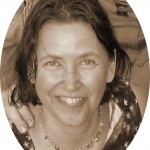Bowen Therapy
An Ideal Compliment to Your Naturopathic Repertoire
Susanna Czeranko, ND
What Bowen is not says much about what Bowen is. Gene Dobkin (1998) writes that Bowen is not massage, acupressure, chiropractic, energy work, physiotherapy, neuromuscular ‘reeducation’, trigger-point therapy, fascial release, lymphatic massage, emotional release adjunct modality or a religious, charismatic or spiritual technique. Bowen is linked to the wisdom of the body; the subtlety of the vis; the delicacy of nerve function and joint placement; and what Dobkin calls the “genius” of a sequence of moves which are “minimal and brilliant.”
In fact, there are many ways to approach a definition. A treatment comprises of a sequence of small gentle moves, each at a specific site on the body. There is not forceful manipulation, just a light cross-fiber maneuvering of a muscle, tendon or ligament that’s pleasant to the recipient. However, fascia also plays an important role in this technique. The precise location of the Bowen moves correlate markedly with the latest research into the meridian energy system, acu-points and myofascial trigger-point therapy.
In any case, who could imagine that a few simple but strategic movements could have such dramatic results for patients? Bowen therapy involves soft tissue and a gentle touch. There are no noises of joints being cracked or any erythema from friction or hard rubbing.
Originated in Australia, Bowen was developed by Tom Bowen who had no medical education and was actually very suspicious of medical doctors. Born in 1916, by 1952 Bowen was esteemed as a man with healing hands and people flocked to his doors for healing. He eventually gave up his day job and opened a manipulative clinic. By 1974, he was treating more than 13,000 people each year.
Bowen developed his new therapy over many years. It eventually attracted practitioners across the world because of its effectiveness and simplicity. When I first learned of Bowen I was curious about that simplicity, and over the past 12 years, I have been amazed by the quick results achieved by one or two treatments. In fact, about 95% of my patients do not have to return for numerous follow-up visits because their injuries resolve quickly.
Let me illustrate the effectiveness of Bowen therapy with three representative cases which point out its profound benefits. All of these patients happened to be 42 when they came to me. That is completely coincidental . . . or maybe there’s something else underfoot.
Case Study #1
The patient was referred to me by his wife who was concerned by his recurrent pain and immobility. He drove trucks for a living, was obese, and was proud of his acquired beer belly. His medical history included a lot of high-school sports injuries, including those from football and hockey. At the age of 30, he had a back operation where lumbar four and five were fused together. A second operation was needed as the first was unsuccessful. He presented with right sciatica pain extending down his leg which was numb and would elicit jabbing pain sensations with movement. He took aspirin by the handful and subsequently experienced frequent heartburn for which he took Zantac.
After the first treatment, I was personally holding my breath. The patient was obese and I found that when I would landmark the Bowen therapeutic sites, I was unable to distinguish them. I completed the treatment and really did not feel the patient would find any relief from his pain. His bulky body was hard to work with and his life choices were obstacles to his cure.
He returned a week later with his back pain and sciatica 80% better. A second session was completed, and I did not see this patient again. His wife informed me that he has been pain-free and drug-free since the last appointment.
Case Study #2
This patient was a competitive cyclist who trained and raced to win. Twenty years previously, he had injured and sprained his right ankle while playing squash. He presented with a new injury to the right calcaneotalus joint that resulted from cycle training. During his workout he would experience very little pain. However, upon finishing, his ankle would swell and pain would radiate along the Achilles tendon. On examination, the right ankle was markedly swollen and tender to touch.
A Bowen treatment was given, and a one-week follow-up appointment was arranged. The patient felt “astonishingly well” but his ankle was still edematous. He was resigned to his swollen ankle since it had been with him for 20 years. A second treatment was given, and two weeks later, he reported that there was no swelling and he was pain-free after a 300 km race on the weekend.
I saw the patient for other health problems, but to this day, he has won his long-distance races and is pain-free.
Case Study # 3
My final case illustrates how Bowen can provide an alternative source of help and relief when a patient feels completely forsaken by the medical system. She was referred by a friend who received one Bowen session that completely resolved her back pain. The patient had been in two car accidents within two years. She was rear-ended both times and suffered whiplash in each accident. She suffers from daily headaches, stiff neck and constant pain “all over and all the time.” She had seen a chiropractor, a massage therapist and a physiotherapist and had very few improvements in her symptoms. On examination, she is a petite woman and pain is easily elicited by touch. She has no energy, no patience and reports that she cannot even think because it gives her a headache.
Her pain is 10/10 and she cries often.
She was given a Bowen session and a week later at her follow-up, she reported that she had suffered from a bout of the flu after the session. A second Bowen was given. She returned and was ecstatic that her pain had been significantly reduced, her headaches were less intense, and she had resumed volleyball. She told me that her shoulder was hit by the ball and normally would have been hurting but that it was fine. She received a Bowen session every four to eight weeks over the next four months. Her need for tuning up her body became much less, and she is now avidly playing baseball and made the playoffs in volleyball.
Despite the complexity and long-standing injuries in each of these cases, Bowen was successful in bringing pain relief and a healthier enjoyment of living. I am astounded sometimes at how simple Bowen is and how miraculous the healing can be from such simplicity. It is an elegant therapy; so appropriate to the noninvasive, respectful traditions of naturopathy.
Sussanna C. Czeranko, ND graduated from CCNM in 1994 following studies in kinesiology at the University of Waterloo. She has completed extensive training in Homeopathy, the Bowen Technique, Hydrotherapy, the Hendricks’ Method of Body Centered Therapy and specialized post-graduate Environmental Toxicity and Detoxification training. Sussanna and her partner live in the countryside with a huge array of animals including a 15 foot tall guardian bear. A passion for sharing her healing skills and interests has recently been galvanized by recovering from a serious car accident. She has written and lectured from the Yukon to Quebec on many health issues, and has been a past Board member of the Canadian Naturopathic Association and at CCNM.
Classes in the Buteyko Method will soon be available and complement naturopathic practice powerfully.











